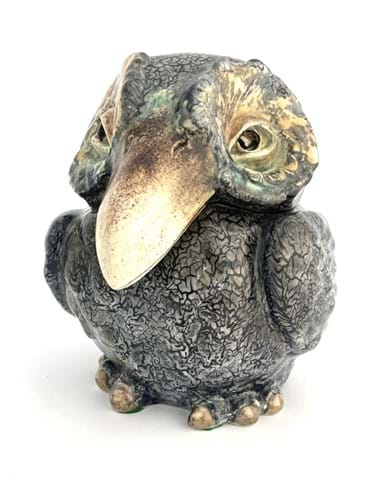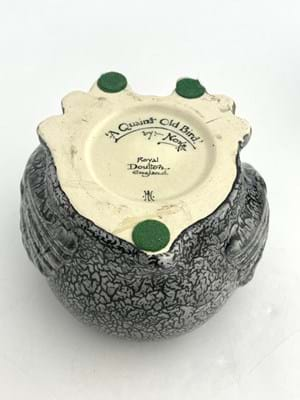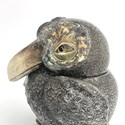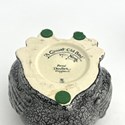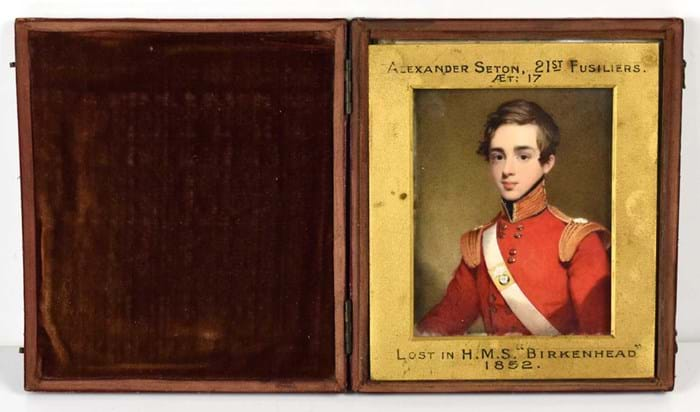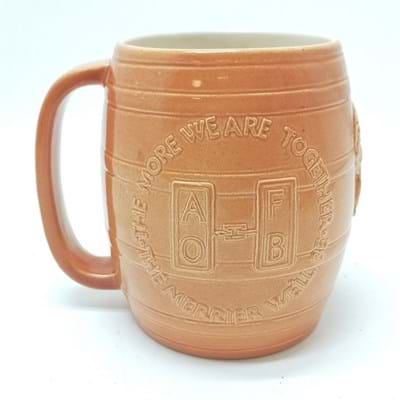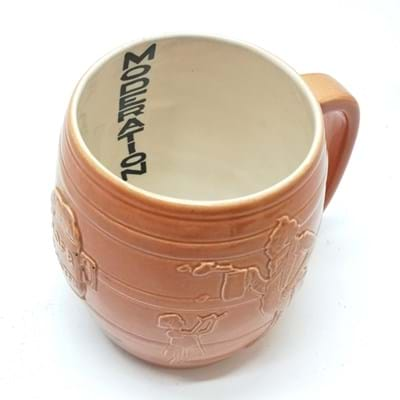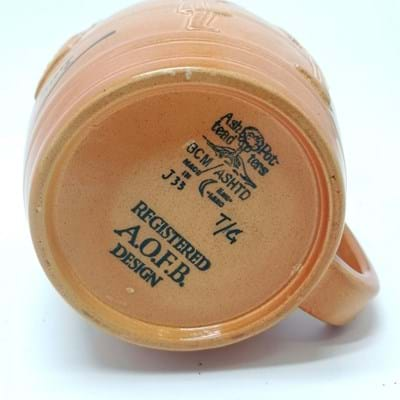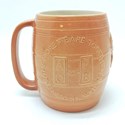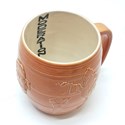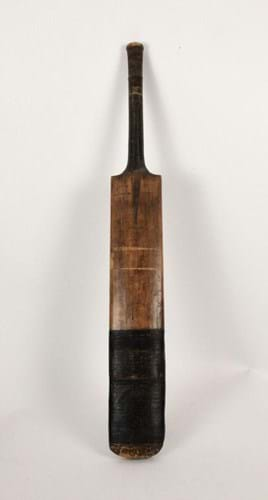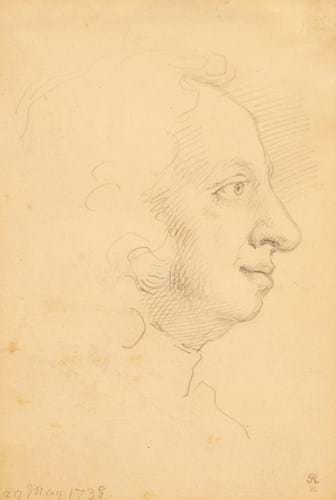1. Royal Doulton bird jar – £10,000
Anthropomorphic bird jars are typically associated with the work of the Martin Brothers in Southall, London. Robert Wallace Martin first began modelling them in the 1880s and continued until the advent of the First World War.
However, the concept was borrowed by other manufacturers. This 9in (22cm) model of a squat creature with broad beak and owl-like eyebrows is by Royal Doulton. Its form recalls both the Martin Brothers birds and a Jugendstil pewter inkwell by Kayserzinn.
Signed to the base, Noke for artistic director Charles Noke and HN for Harry Nixon who pioneered the oriental-inspired Chang glaze applied to this piece, it is titled A Quaint Old Bird. The name appears to be taken from a popular song in the successful musical comedy The Catch of the Season that was first released in 1904.
Possibly a unique piece, it was offered with an estimate of £6000-8000 at Kinghams in Moreton-in-Marsh on July 27-28 where it sold for £10,000.
2. Portrait miniature – £2100
This 19th century watercolour on ivory portrait miniature depicts Lieutenant Colonel Alexander Seton (1814-1852) of the 21st Fusiliers. He was an officer on board the HMS Birkenhead that was wrecked at Danger Point, near Cape Town on February 26, 1852. There were insufficient serviceable lifeboats for all the passengers, so the soldiers (including Seton) famously stood in ranks on board, allowing the women and children to board the boats.
Only 193 of the estimated 643 people on board survived, with soldier’s selfless act giving rise to the standard ‘women and children first’ protocol when abandoning a ship. The miniature (the artist is unknown) had a guide of £300-400 at Stamford Auction Rooms, Lincolnshire on July 29 but, such was the appeal of the subject, it took £2100.
3. Earthenware tankard – £700
The Ancient Order of Froth Blowers was a British charitable organisation established in the decade after the First World War “to foster the noble Art and gentle and healthy Pastime of froth blowing amongst Gentlemen of-leisure and ex-Soldiers”.
Running from 1924 to 1931, it was founded by Herbert Longdale Temple, an ex-soldier and curtain-merchant who hoped to raise £100 for children’s charities. By late 1928, 700,000 had joined, raising over £100,000.
The idea was for members to meet regularly in pubs and clubs to enjoy “beer, beef and baccy”. Many wore AOFB cufflinks and drank from AOFB tankards. These items are collectable today – as witnessed at Acreman Street Antiques Auction in Sherborne, Dorset when this earthenware advertising tankard came up for sale.
The lettering to the interior reads Moderation while the base carries the mark of the Ashtead Pottery in Surrey and the words AOFB Original Design. Evidently a rarity, it was guided at £20-30 but sold at £700.
4. ‘Father of Indian Cricket’ bat
This late Victorian cricket bat by Benjamin Warsop & Sons is inscribed Ranji’s University bat 1892 and 1893. To the back are the ink initials KSR and a list of matches and scores achieved with the bat across two seasons.
Opening the batting for Trinity College, Cambridge, the 1892 season was the first year Kumar Shri Ranjitsinhji (1872-1933) played senior cricket. He gained his ‘blue’ the following year and would later play for Sussex and England. His importance in the history of the game is twofold. Regarded among the greatest batsmen of his era, he was among the first to play off the back foot, both in defence and attack. He is particularly associated with one shot, the leg glance, which he invented or popularised. More generally he is considered the ‘Father of Indian Cricket’, as he was one of the earliest top-class Indian cricketers to play the sport. The first-class cricket tournament in India, the Ranji Trophy, was named in his honour, by which time he had taken inherited the title of maharajah and ruler of the Indian princely state of Nawanagar,
One of several historic bats offered by sporting specialist Knights Auction Rooms in Norfolk on August 6-8, it was guided at £6000-9000 but sold at £21,000.
5. Self-portrait drawing – £1600
Jonathan Richardson (1667-1745) was a prolific painter and sketcher the luminaries of the late Stuart and early Georgian era. However, among more than 1000 drawings he left to his family, were a remarkable series of self-portrait drawings.
He is thought to have begun the introspective series around 1728, shortly before he retired from professional life, and continued at a rate on one or two a month for the next decade. Today more than 50 of these self-portraits – mainly graphite on vellum or chalk on paper studies of the effects of aging and changing mood – are known including examples at the Courtauld, the British Museum and the National Portrait Gallery.
A small 6 x 4in (14 x 10cm) plumbago on vellum profile image from 1738 was offered for sale on July 25 at Chorley’s in Prinknash Abbey. It was making a return to the Gloucestershire rooms having last sold here in 2010 but has a much earlier provenance to the sale of Richardson drawings held on behalf of his descendants in 1772.
It was a purchase for a bidder on thesaleroom.com at £1600 (estimate £100-200).


